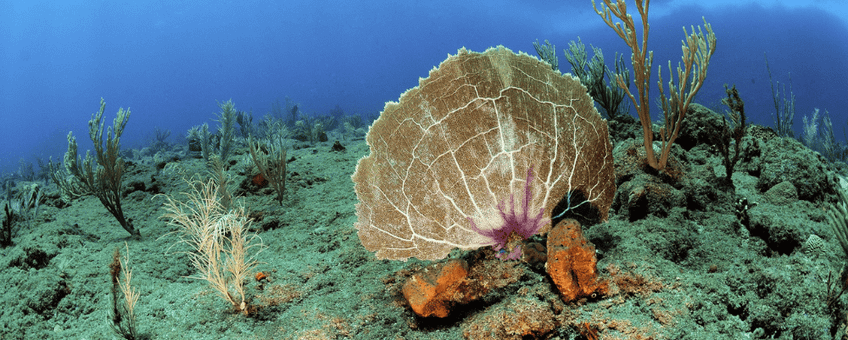
Mysterious purple spots threatening Dutch Caribbean reefs
Dutch Caribbean Nature Alliance (DCNA)Caribbean sea fans play a key role in maintaining healthy coral reef ecosystems. However, with climate change and rising sea temperatures, these corals are becoming more vulnerable to diseases like MFPS. The syndrome is characterized by small purple spots that form lesions on sea fans, leading to tissue damage. Until now, the exact cause of the disease had been unclear, making it difficult to manage and prevent its spread.
Who conducted the research?
An international team of scientists from institutions including Lomonosov Moscow State University, Shenzhen MSU-BIT University, Naturalis Biodiversity Center, University of Groningen, University of the Ryukyus, and the University of Havana conducted this study. They collected samples over a period from 2015 to 2019 from sites in the Caribbean, including Sint Eustatius, Curaçao, Bonaire, and Cuba. Using molecular tools, the researchers identified the copepod parasites responsible for the disease.
Key findings
The study found that copepods from the genus Sphaerippe are the cause of MFPS in sea fans. These copepods create galls in the coral tissue where they live and reproduce. The research revealed that different species of copepods are present across various Caribbean locations, and are mostly indistinguishable, requiring molecular tools for identification. The findings also highlighted how variations in larval dispersal could explain the spread of the disease in different regions.
Why does it matter?
Sea fans are crucial to the biodiversity of coral reefs, and their decline could have cascading effects on the entire marine ecosystem. Protecting sea fans from diseases like MFPS is important, not just for the health of coral reefs in the Dutch Caribbean, but also for the broader goal of conserving marine life in a changing climate.
Text: Dutch Caribbean Nature Alliance (DCNA)
Photo: Hans Leijnse (lead photo: Common sea fan (Gorgonia ventalina))
